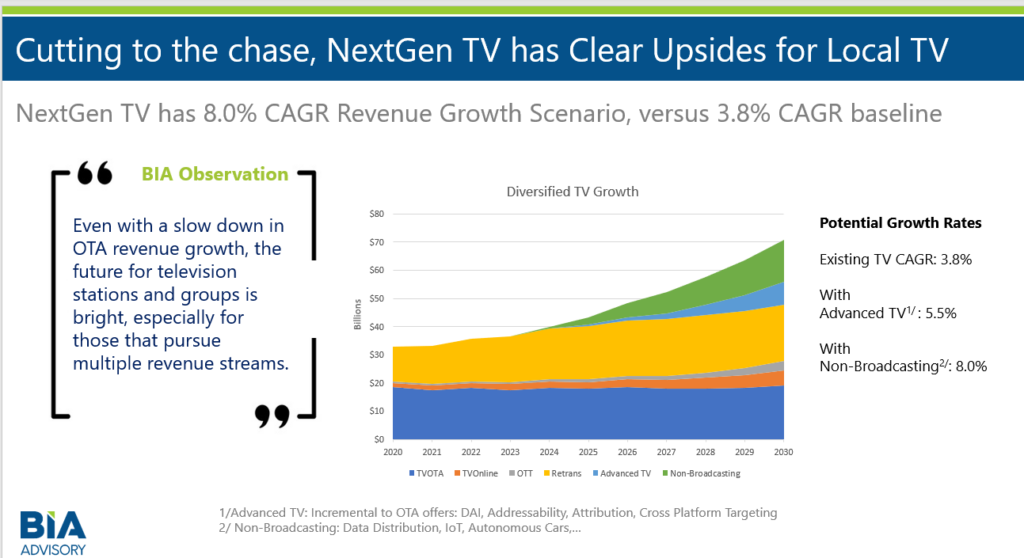NextGen TV, nee ATSC 3.0, may be emerging from an identity crisis. What is it and how is it different from everything else in TV land?
Two events kicking off the New Year created a bit more clarity. We’re still in the you say “toe may toe” and I say “toe mah toe” era of NextGen TV versus ATSC 3.0. The local TV industry needs to step up and do what it does best and brand NextGen TV with an identify that’s real and connects with viewers, advertisers, programmers, production companies, spectrum users, and anyone else in the value chain. There’s a meaningful prize out there for the brave ones who take-on and survive the NextGen TV birthing process and transform this into a viable and exciting new local distribution platform.
This month’s Consumer Electronics Show had more NextGen TV coverage this year than last. Helpful to be sure, but not actually saying much since it was nearly invisible at last year’s show.
The fact that 20+ TV models are coming this year with built-in NextGen TV receivers seemed to be the biggest newsmaker. What makes these sets special are that they feature better sound, pictures and can connect to the Internet . These may be core benefits to NextGen TV but it also sounds like any new smart TV model these days. Not helpful to NextGen TV’s unique identity and its attempts to build a solid brand.
The other meeting this month on the NextGen TV 2020 kick-off calendar was the SPMPTE DC-chapter summit, “How ATSC 3.0 Will Transform Television,” at last week’s sold-out meeting. It was packed with many of the leading technical minds who will determine how NextGen TV will be rolled out to local markets.
The identity features the group spoke about included Spectrum efficiency, robust signals capable of penetrating walls and serving speeding cars, single frequency networks for filling in coverage shadows, multiple services and using connected devices for interactive, personalized and targeted content.
The main goal of the SMPTE meeting was to contemplate the question of the hour: “How should media companies leverage these new technologies to create new consumer experiences and business opportunities?” And that’s the gist of the identity crisis.
NextGen TV is still mostly an open script of possibilities with the ending yet to be written. It’s up to the local TV groups who will bring NextGen TV that last mile to come up with a script that moves the marketplace by giving NextGen TV an identity that consumers and businesses will find compelling and to which they’ll flock. Otherwise, what’s the point?
BIA’s view is that the point is that NextGen TV could be a significant growth platform for Local TV opportunities. In BIA’s forecast, we’ve modeled NextGen TV scenarios that could increase compound annual growth rates (CAGRs) from a baseline of +3.8 percent CAGR to +5.5 percent including Advanced TV services and up to +8.0 percent if non-broadcasting (e.g., spectrum capacity leasing and other non-core advertising businesses) growth is included.

Getting to these growth numbers is speculative and requires the industry to be innovative and committed in developing new offers in core and adjacent markets.
It’s not an easy road, but it is the road to growth and one we at BIA are focused on understanding. Download BIA’s SMPTE presentation here to see the full report.

